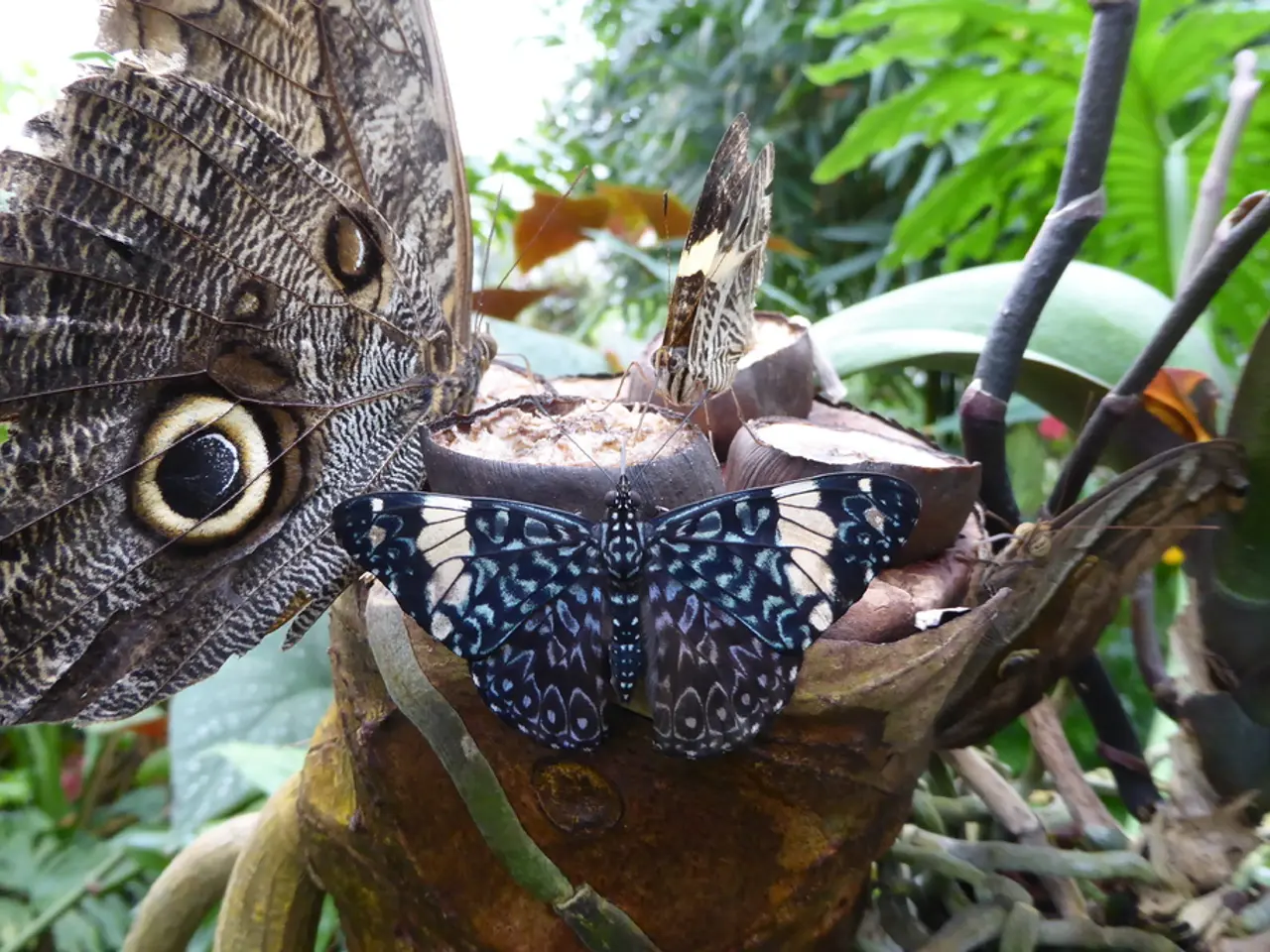Strategies for enticing butterflies to your garden: Expert advice on suitable plants and other methods to lure these aerial marvels
Butterflies are not just beautiful creatures to admire; they play a crucial role in our ecosystem as pollinators. With more than half of UK butterflies in long-term decline, it's essential to create gardens that cater to their needs.
Firstly, it's important to provide spaces for butterflies to shelter and roost. Log piles, leaving leaf litter, and avoiding cutting flower stems until spring can offer such spaces.
When it comes to plants, the key is to choose a mix of nectar sources and host plants for their larvae. Some of the best nectar plants include Purple Coneflower (Echinacea purpurea), Sage (Salvia spp.), Sea Holly (Eryngium spp.), and Mexican Sunflower (Tithonia). Perennials like Purple Coneflower, Sage, and Beebalm are attractive to various butterfly species. The Mexican Sunflower, in particular, produces bright orange flowers that are highly attractive.
Parsley and Bronze Fennel serve as host plants favored by swallowtail butterfly larvae, providing egg-laying sites and food for caterpillars. Native plants like Joe-Pye weed, Goldenrod, and Asters offer plentiful nectar and support local butterfly populations well.
While butterfly bushes (Buddleia) are widely known for attracting butterflies, some varieties are invasive and can displace native plants. To avoid ecological harm, sterile varieties are recommended.
To maximize butterfly visits, plant a variety of nectar-rich flowers that bloom successively to provide food throughout the butterfly active season. Arrange plants to mimic wildflower meadows, facilitating easy movement and feeding for butterflies.
Creating a wild area in the garden, such as a mini meadow or an area around the base of a tree, can encourage a variety of native grasses, flowers, shrubs, and trees, benefiting caterpillars and adult butterflies.
By gardening with butterflies in mind, one can actively help these creatures and nurture the wider ecosystem. Choosing nectar-rich, pollinator-friendly plants will entice butterflies into a garden. Seedball's Butterfly Mix is a recommended blend of wildflower seeds known to attract and support a wide range of UK butterfly species.
Ivy provides nectar and shelter for butterflies and other pollinators through autumn months. Sedums, such as the "Herbstfreude" variety, are drought-tolerant, make great plants for a rock garden, and flower through summer and autumn, providing late nectar for butterflies.
Spending time connecting with nature, such as observing butterflies, can reduce stress and improve physical and mental health. The summer months are an ideal time to learn how to attract butterflies to a garden.
Gardening for butterflies is not just a trend but a meaningful way to contribute to the conservation of these vital creatures. Gardens, when combined, make up a habitat larger than all the UK's National Nature Reserves. Taking a natural approach to gardening can help increase butterfly populations.
Lastly, remember that pesticides have contributed to the decline in British butterflies. A natural approach to gardening, avoiding the use of pesticides, can help support butterfly populations and the wider ecosystem.
References:
- Butterfly Conservation
- Royal Horticultural Society
- Garden Organic
- Seedball
- Butterfly Bushes: A Problem or a Solution?
- To foster the beauty and health of butterflies at home, consider planting a mix of nectar sources and host plants, such as Purple Coneflower, Sage, Sea Holly, Mexican Sunflower, Parsley, and Bronze Fennel.
- By gardening with a focus on wellness and home-and-garden lifestyle, you can create a welcoming environment not only for butterflies but also for other pollinators and native species.
- Ivy and Sedums, like "Herbstfreude," provide food and shelter for butterflies during the autumn months, ensuring their survival through the colder seasons.
- Embracing a natural approach to gardening, without the use of pesticides, can contribute to the conservation efforts of butterflies, ultimately benefiting the wider ecosystem.



